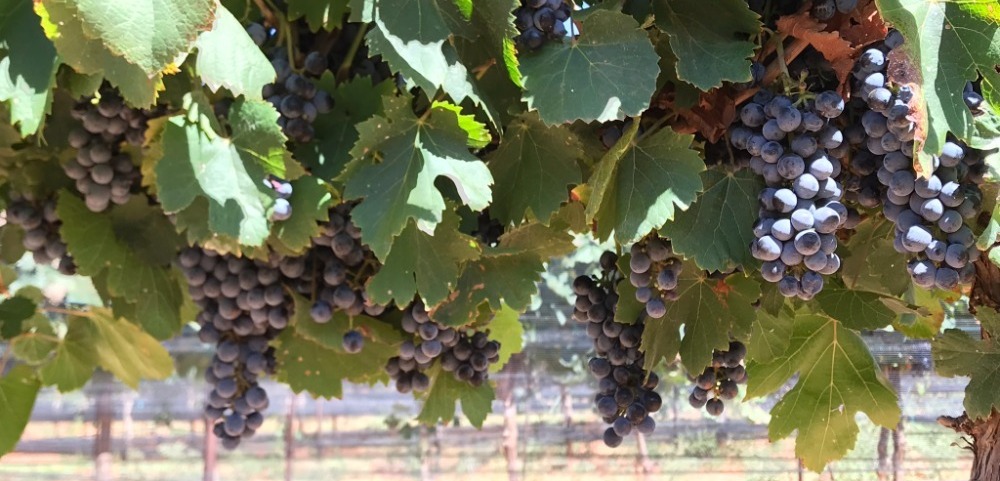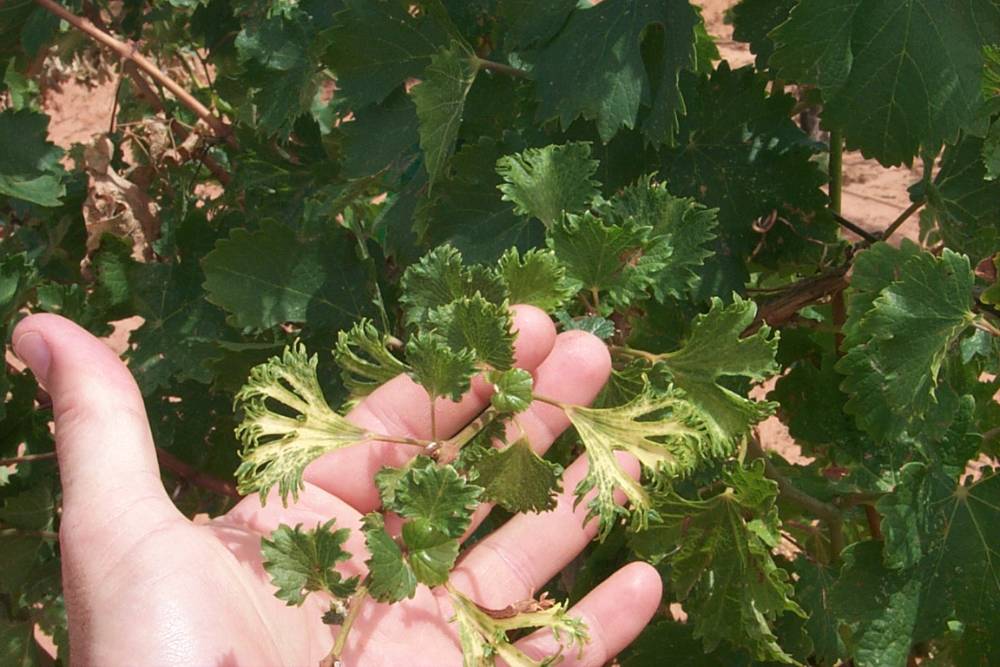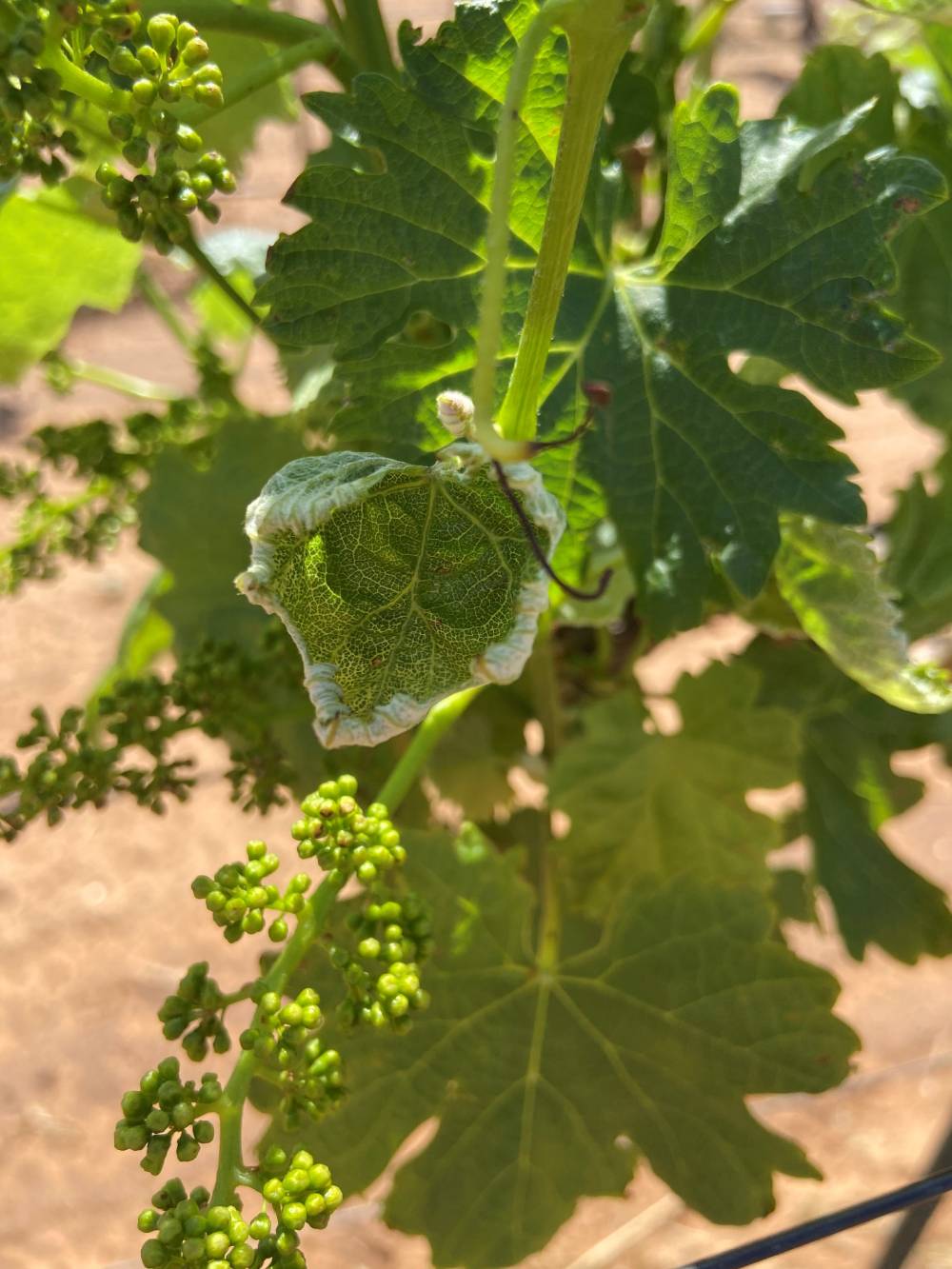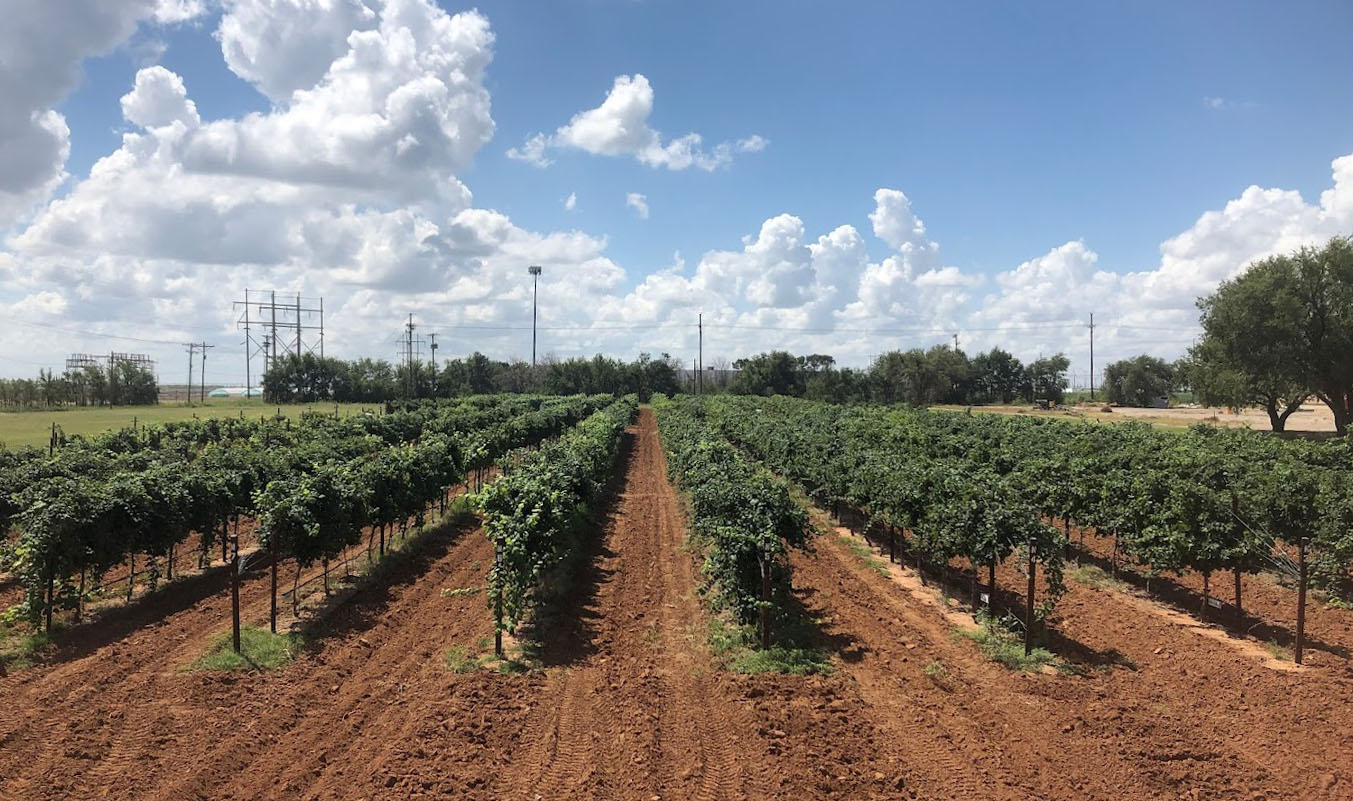

With more than 500 wineries, the state of Texas is one of the largest wine-producing states in the US, and growers in the High Plains are responsible for nearly 80% of those Texas wine grapes.
However, the same region is also a major source of cotton production, and with modern cotton production comes herbicide use. The hot, dry, and windy conditions of the High Plains can carry herbicides miles from their application site, and for perennial species such as grapes, this potential volatility and drift exposure may affect plant productivity and yield for many years.
"The impact of herbicide drift continues to be an ongoing concern for the Texas wine and grape industry," says Patrick Whitehead, Texas Wine and Grape Growers Association President. "One would be hard pressed to find a commercial grower in our state that hasn't suffered through the devastating effects of 2,4-D and Dicamba that finds its way into a vulnerable and defenseless vineyard."
With support from a recent $117,552 grant from the Texas Department of Agriculture, researchers from the Texas Tech University Department of Plant and Soil Science are hoping to help.

Grape leaf with 2,4-D damage
A novel solution
A collaborative project between Texas Tech University, Texas A&M AgriLife Extension, and High Plains grape growers will be exploring methods to avoid and minimize vineyard injury from the volatilization and drift of synthetic auxin-type herbicides.
According to Thayne Montague — a TTU Associate Professor of Horticulture with a TAMU AgriLife Research joint appointment — the goal is to develop a spray to quickly adsorb and photodegrade drifted herbicide on the leaf surface before it can enter the plant and do damage.
"We're excited about this novel approach," says Montague, who is the lead Principle Investigator on the project, "and we hope our data will assist Texas High Plains grape growers sustain vine health, maintain vine yields, and continue to produce fruit with the excellent fruit quality for which this region is known."
Assisting Montague with research and extension aspects of the project are Pierre Helwi, TAMU AgriLife Extension; Peter Dotray, TTU Rockwell Chair of Weed Science, TAMU AgriLife Research, and TAMU AgriLife Extension; and Kirk Williams of Texas Tech University.
"One would be hard pressed to find a commercial grower in our state that hasn't suffered
through the devastating effects of 2,4-D and Dicamba that finds its way into a vulnerable
and defenseless vineyard."
Working with clay
Prior research has shown dicamba does eventually degrade on inorganic surfaces and fine clay particles — such as kaolin clay — have the ability to adsorb dicamba. Additionally, kaolin clay products have been used in vineyards to address a number of separate issues, ranging from heat protection to pest control.

Grape leaf with dicamba damage
With this foundation, the researchers will develop and test spray mixtures of clay and other compounds to act as a thin barrier for adsorbing and then photodegrading herbicide chemicals, rendering them harmless to the grape plant. This technique could provide a new solution to the persistent drift problem faced by grape growers throughout the Texas High Plains. Importantly, these formulations will likely be easy to apply, flexible, and will not require grape growers to purchase additional equipment.
"Many of our grower members are facing the fact that they may go out of business because they are suffering yield loss and vine loss," says Joe Riddle, President of the Texas Artisan Vineyards Cooperative. "This research could help our grower members stay in business and keep the Texas Wine Industry viable."

